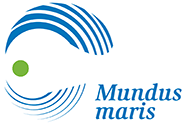Merluccius hubbsi Marini, 1933
Argentine hake
Beobachtung melden im Fish Watcher
| Native range | All suitable habitat | Point map | Year 2050 |

|
| This map was computer-generated and has not yet been reviewed. |
| Merluccius hubbsi AquaMaps Data sources: GBIF OBIS |
Hochladen Photos und videos
Pictures | Google BildMerluccius hubbsi
Picture by INIDEP
Pictures | Google BildMerluccius hubbsi
Picture by INIDEP
Common names from other countries
Klassifizierung / Names Namen | Synonyme | Catalog of Fishes(Gattung, Arten) | ITIS | CoL | WoRMS | Cloffa
> Gadiformes (Cods) > Merlucciidae (Merluccid hakes)
Etymology: Merluccius: Latin, mar, maris = the sea + Latin, lucius = pike (Ref. 45335).
Eponymy: Professor Carl Levitt (Leavitt) Hubbs (1894–1979) was a giant of American ichthyology. [...] (Ref. 128868), visit book page.
Etymology: Merluccius: Latin, mar, maris = the sea + Latin, lucius = pike (Ref. 45335).
Eponymy: Professor Carl Levitt (Leavitt) Hubbs (1894–1979) was a giant of American ichthyology. [...] (Ref. 128868), visit book page.
Environment: milieu / climate zone / depth range / distribution range Ökologie
seewasser benthopelagisch; ozeanodrom (Ref. 51243); tiefenbereich 50 - 800 m (Ref. 9715), usually 100 - 200 m (Ref. 1371). Temperate; 20°S - 56°S, 69°W - 40°W (Ref. 58452)
Verbreitung Länder | FAO Gebiete | Ecosystems | Vorkommen | Point map | Einführungen | Faunafri
Southwest Atlantic: off southern Brazil to Argentina and the Falkland Islands up to 54°S (Ref. 47377).
Length at first maturity / Size / Gewicht / Alter
Maturity: Lm 30.4 range ? - ? cm
Max length : 95.0 cm TL Männchen/unbestimmt; (Ref. 1371); common length : 50.0 cm TL Männchen/unbestimmt; (Ref. 1371); common length :60 cm TL (female); max. veröff. Alter: 6 Jahre (Ref. 83871)
Max length : 95.0 cm TL Männchen/unbestimmt; (Ref. 1371); common length : 50.0 cm TL Männchen/unbestimmt; (Ref. 1371); common length :60 cm TL (female); max. veröff. Alter: 6 Jahre (Ref. 83871)
Kurzbeschreibung Bestimmungsschlüssel | Morphologie | Morphometrie
Rückenflossenstacheln (insgesamt) : 1; Rückenflossenweichstrahlen (insgesamt) : 43 - 52; Afterflossenstacheln: 0; Afterflossenweichstrahlen: 36 - 41; Wirbelzahl: 50 - 53. Gill rakers short and thick with blunt tips. Pectoral fins relatively short, not reaching level of anal fin origin. Color is silvery with golden luster on back, silvery white on belly (Ref. 1371).
Adults inhabit continental shelf depths mainly between 100 and 200 m (Ref. 1371). Larger individuals feed on fish (anchovies, hake, nototheniids, myctophids and Southern blue whitings), squids and macrozooplankton (euphausiids and amphipods); smaller individuals feed on mysids and amphipods (Ref. 1371). Migrate inshore during spring and summer, and offshore into deep water wintering areas after spawning; also undertake diel vertical migrations (Ref. 1371). Sold fresh and frozen.
Life cycle and mating behavior Geschlechtsreife | Fortpflanzung | Ablaichen | Eier | Fecundity | Larven
An indeterminate batch spawner.
Hauptreferenz
Upload your references | Referenzen | Koordinator | Partner
Cohen, D.M., T. Inada, T. Iwamoto and N. Scialabba, 1990. FAO species catalogue. Vol. 10. Gadiform fishes of the world (Order Gadiformes). An annotated and illustrated catalogue of cods, hakes, grenadiers and other gadiform fishes known to date. FAO Fish. Synop. 125(10). Rome: FAO. 442 p. (Ref. 1371)
Bedrohung für Menschen
Harmless
Nutzung durch Menschen
Fischereien: hoch kommerziell; Sportfisch: ja
FAO(Fischereien: production, Artbeschreibung; publication : search) | FishSource | Sea Around Us
Mehr Information
Population dynamics
Growth parameters
Max. ages / sizes
Length-weight rel.
Length-length rel.
Längenhäufigkeiten
Mass conversion
Rekrutierung
Dichte
Growth parameters
Max. ages / sizes
Length-weight rel.
Length-length rel.
Längenhäufigkeiten
Mass conversion
Rekrutierung
Dichte
Life cycle
Fortpflanzung
Geschlechtsreife
Fecundity
Ablaichen
Spawning aggregations
Eier
Eientwicklung
Larven
Larven Pop.Dyn.
Fortpflanzung
Geschlechtsreife
Fecundity
Ablaichen
Spawning aggregations
Eier
Eientwicklung
Larven
Larven Pop.Dyn.
Anatomy
Kiemenoberfläche
Brain
Otolith
Kiemenoberfläche
Brain
Otolith
Physiology
Body composition
Nutrients
Oxygen consumption
Swimming type
Swimming speed
Visual pigments
Fish sound
Diseases & Parasites
Toxicity (LC50s)
Body composition
Nutrients
Oxygen consumption
Swimming type
Swimming speed
Visual pigments
Fish sound
Diseases & Parasites
Toxicity (LC50s)
Genetics
Genetik
Heterozygosity
Vererbbarkeit
Genetik
Heterozygosity
Vererbbarkeit
Human related
Aquaculture systems
Aquakultur Profile
Zuchtlinien
Ciguatera cases
Stamps, coins, misc.
Aquaculture systems
Aquakultur Profile
Zuchtlinien
Ciguatera cases
Stamps, coins, misc.
Tools
E-book | Feldführer | Bestimmungsschlüssel | Längenhäufigkeits Tool | Lebensdaten Tool | Punkt Karte | Classification Tree
| Catch-MSY |
Zusatzinformationen
Download XML
Zusammenfassung | Point data | Namen | Photos
Internet Quellen
Aquatic Commons | BHL | Cloffa | BOLDSystems | Websites from users | FishWatcher Einträge suchen | CISTI | Catalog of Fishes(Gattung, Arten) | DiscoverLife | ECOTOX | Faunafri | Fishtrace | GenBank(Genom, nucleotide) | GloBI | GOBASE | | Google Books | Google Scholar | Google | IGFA World Record | MitoFish | Nationale Datenbanken | Otolith Atlas of Taiwan Fishes | PubMed | Reef Life Survey | Scirus | SeaLifeBase | Tree of Life | Wikipedia(Gehe zu, Suchen) | World Records Freshwater Fishing | Zoobank | Zoological Record
Estimates based on models
Preferred temperature (Ref. 115969): 4.5 - 18, mean 6.3 (based on 214 cells).
Phylogenetic diversity index (Ref. 82804): PD50 = 0.5000 [Uniqueness, from 0.5 = low to 2.0 = high].
Bayesian length-weight: a=0.00479 (0.00402 - 0.00570), b=3.10 (3.05 - 3.15), in cm Total Length, based on LWR estimates for this species (Ref. 93245).
Trophic level (Ref. 69278): 4.0 ±0.61 se; based on food items.
Widerstandsfähigkeit (Ref. 120179): niedrig, Verdopplung der Population dauert 4,5 - 14 Jahre. (K=0.13-0.19; tm=6).
Prior r = 0.42, 95% CL = 0.27 - 0.62, Based on 4 data-limited stock assessments.
Fishing Vulnerability (Ref. 59153): High vulnerability (61 of 100).
Climate Vulnerability (Ref. 125649): Moderate vulnerability (44 of 100).




